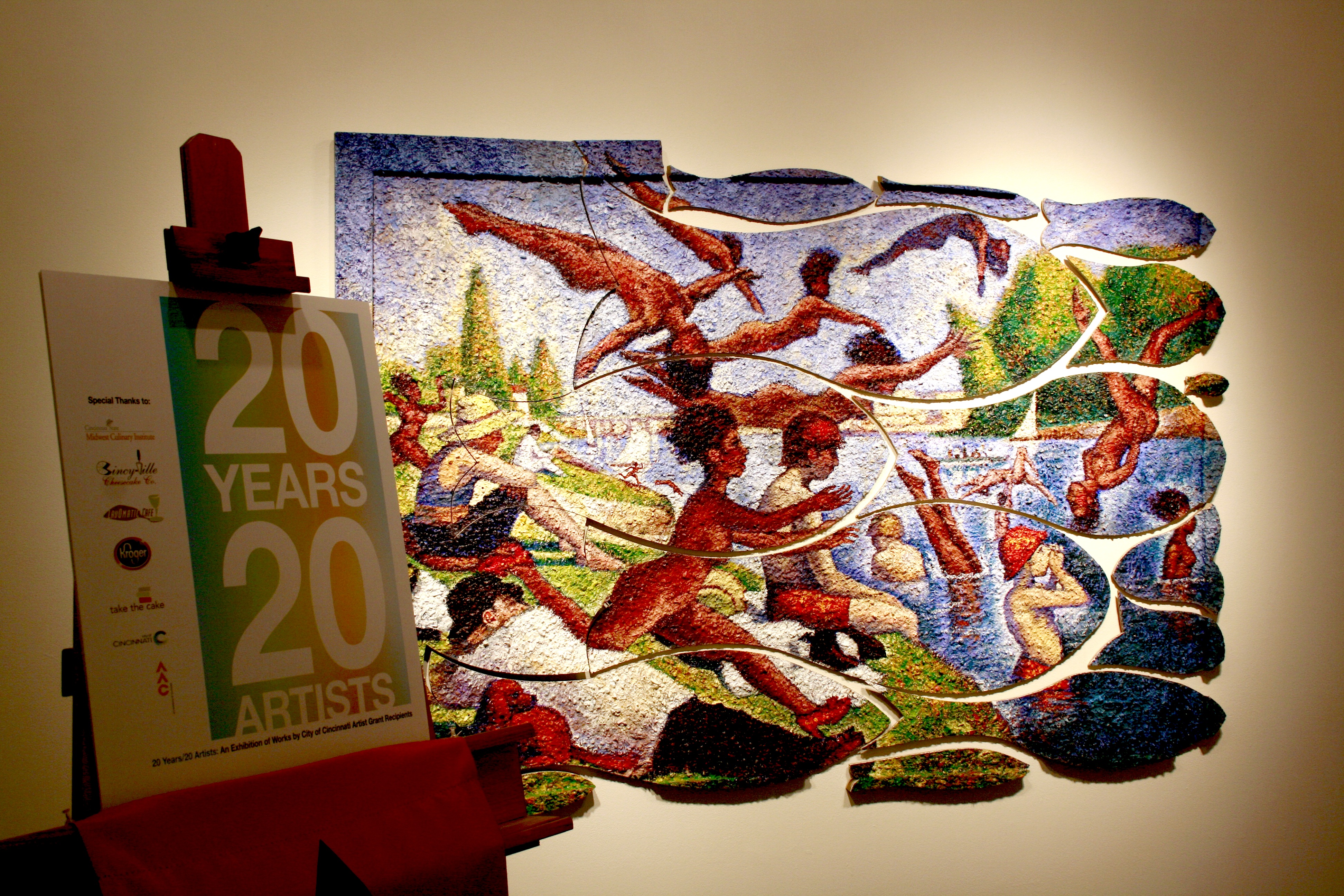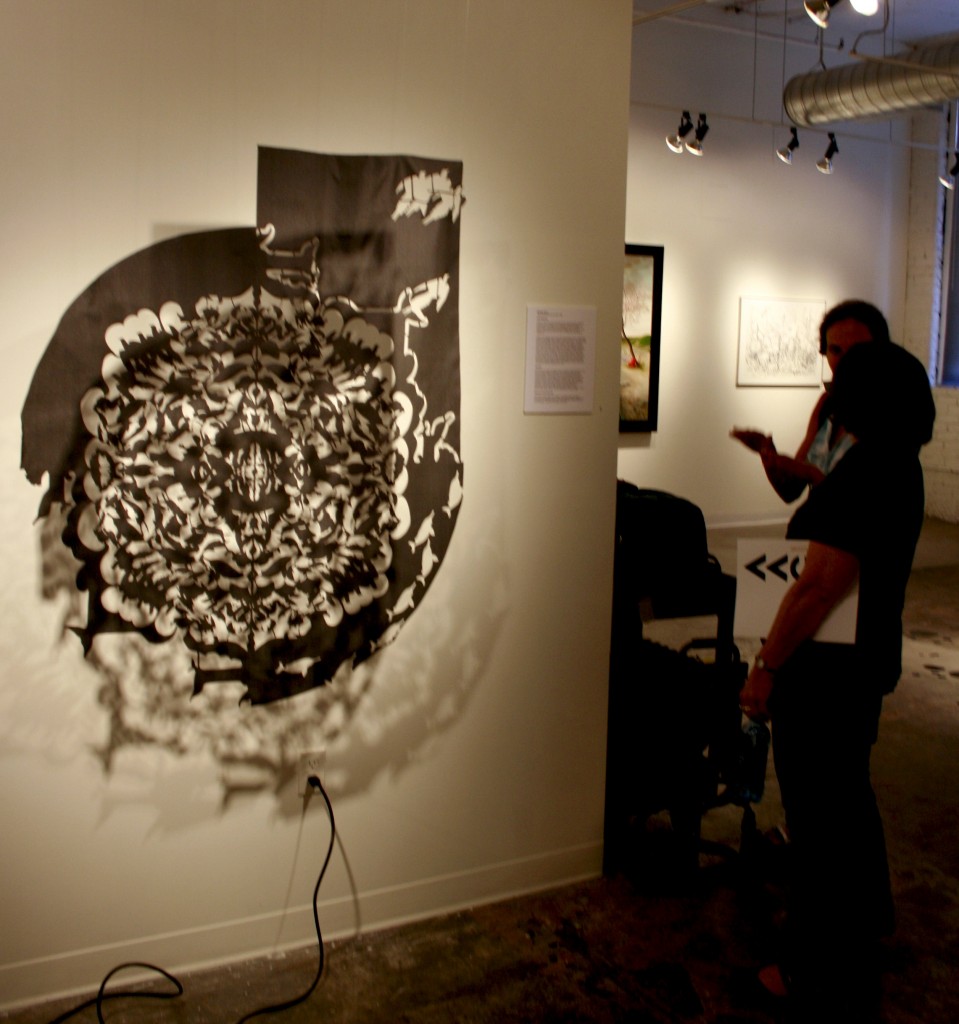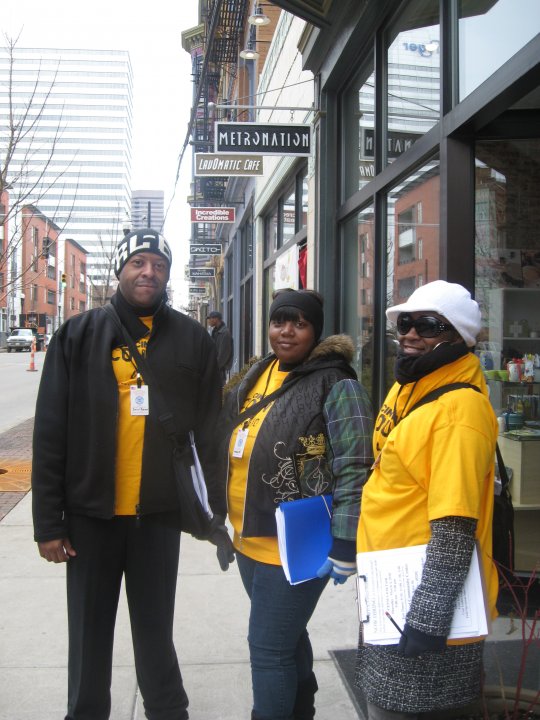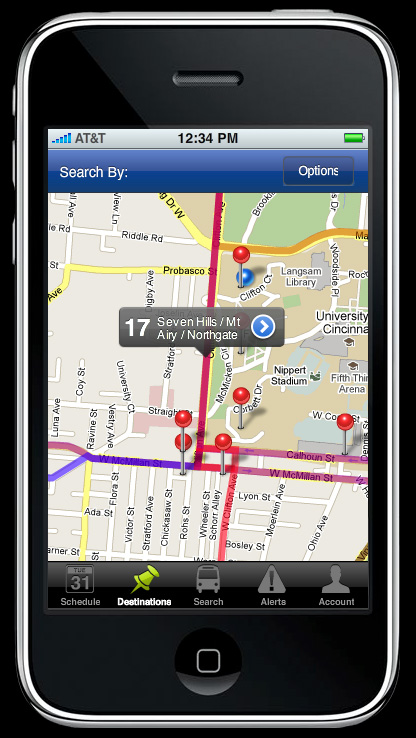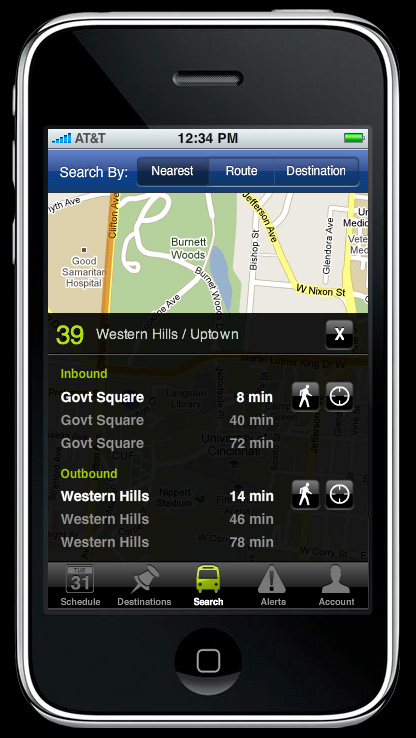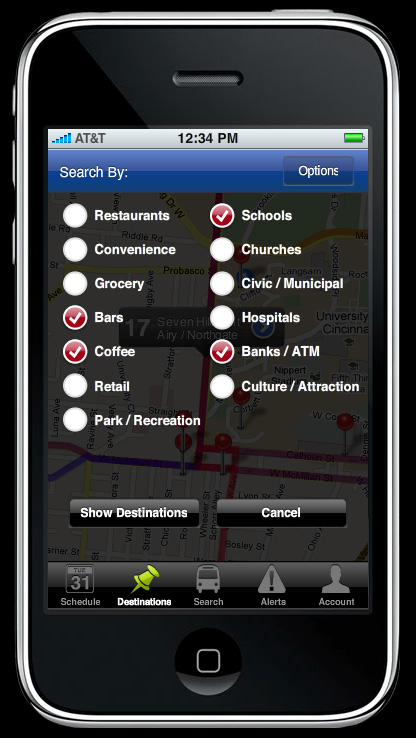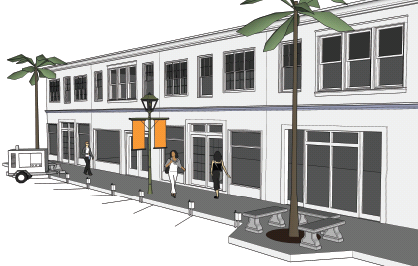Mayor Mark Mallory, Councilmember Laure Quinlivan, and members of the board of the Art Academy of Cincinnati came together on Friday, August 6 to celebrate the opening of a 20 Years/20 Artists – an exhibit showcasing the work of local artists who have received grant money from the City over the last 20 years.
In 1989 the City of Cincinnati established a competitive grant program that awarded money to extraordinary artists in order to help them establish their body of work while also making the arts more accessible to residents. To date, the Individual Artist Grant Program has awarded $700,000, through 320 grants, to 20 artists who might have not otherwise had the chance to change the world around them by sharing their talents.
“20/20 showcases work of successful artists whose work wouldn’t have reached the public without a grant,” said Ron Bates, chairman of the Art Academy’s Board of Trustees. “No other local government in the tri-state area has done this, and it makes a huge difference to these local artists.”
Artists who have participated in the grant program over the years were able to submit work to display in this exhibit highlighting the success of Cincinnati’s Individual Artist Grant Program. The exhibit features 35 pieces of work currently in the gallery, including two media works. At the preview of the new exhibit a few of the artists came and spoke about how the grant program helped launch their careers.
“This [grant money] gave me a reason to dream a bigger dream,” local artist Kate Kern said. “This exhibit is a celebration and recognition of artists we support. It’s a homecoming for those who have made it outside of Cincinnati.”
The free exhibit is open Monday through Sunday from 9am to 5pm until Friday, September 3. A special reception will be held during this month’s Final Friday event on August 27 from 5pm to 8pm. The Art Academy of Cincinnati is located in Over-the-Rhine at 1212 Jackson Street. The exhibition has plenty of on- and off-street automobile parking options nearby in addition to free bicycle parking and Metro bus service (plan your trip).
